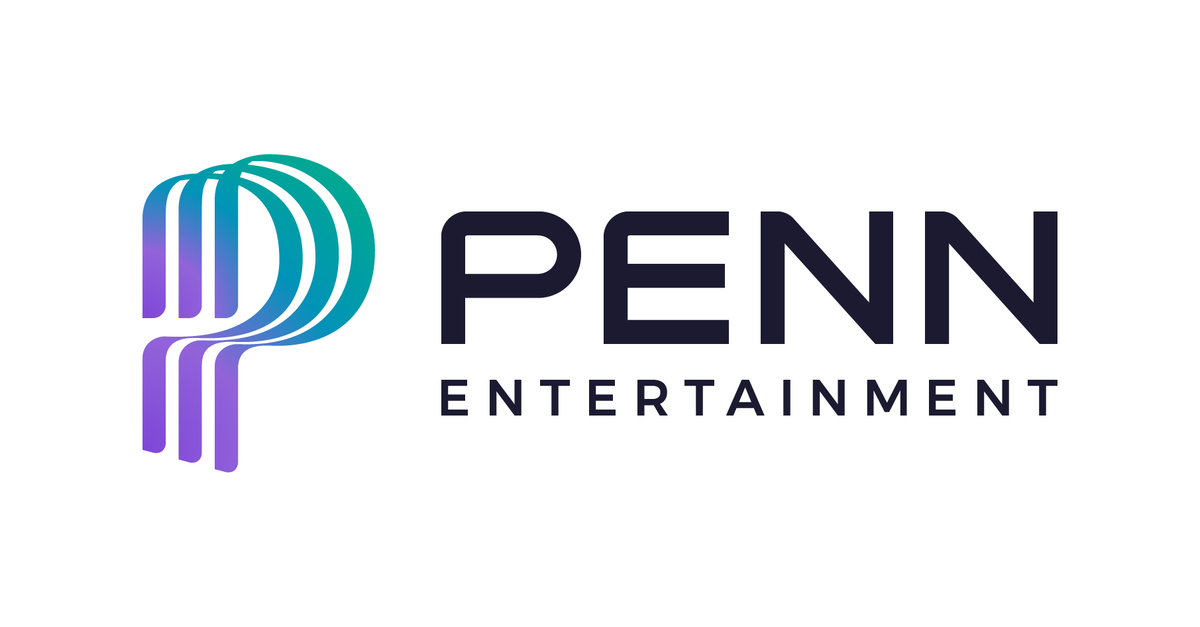PENN Entertainment Publishes 2023 Corporate Social Responsibility Report
PENN Entertainment Publishes 2023 Corporate Social Responsibility Report Business Wire


PENN Entertainment, Inc. Publishes 2023 Corporate Social Responsibility Report

WYOMISSING, Pa.–(BUSINESS WIRE)–PENN Entertainment, Inc. (Nasdaq: PENN)(“PENN” or the “Company), North America’s leading provider of integrated entertainment, sports content and casino gaming experiences, published today its 2023 Corporate Social Responsibility (“CSR”) report. The full report is available on the corporate responsibility page of the Company’s website.
Overview
The report details the broad range of PENN’s Environmental, Social, and Governance (ESG) efforts, which focus on providing support for the Company’s team members and their families, giving back to local communities, and advancing sustainability practices to reduce its impact on the environment.
Key Highlights
- Donated more than $8 million in support of local charities and generated more than $17 million in economic development grants.
- Contributed more than $750,000 to Veteran and military-support focused nonprofit organizations between cash and in-kind donations and established a new military scholarship at Penn State Berks.
- PENN team members volunteered more than 9,500 hours to help those in need.
- Implemented a new Diverse Vendor Incubator Program and exceeded goals for diverse vendor procurement, with a total spend of more than $108 million.
- Launched “PENN Women,” a new employee resource group to increase inclusivity and provide allies and mentorship at all levels of PENN’s workforce.
- Increased sustainability efforts, including completing the Company’s first Scope 3 greenhouse gas (GHG) emissions inventory review, updated our Scope 1 and 2 assessments, and established a GHG reduction goal as part of our commitment to climate footprinting.
Jay Snowden, CEO and President of PENN Entertainment commented: “I want to thank our Board’s Nominating and Corporate Governance Committee, as well as our internal ESG and Diversity Committees, for continuing to raise the bar in terms of supporting our team members, investing in our local communities, and growing our sustainability practices across our Company. I couldn’t be more proud of what we accomplished last year and look forward to continuing to explore ways to make an even greater impact by supporting the causes that are most important to our team members, customers, and key stakeholders.”
About PENN Entertainment, Inc.
PENN Entertainment, Inc., together with its subsidiaries (“PENN,” the “Company,” “we,” “our,” or “us”), is North America’s leading provider of integrated entertainment, sports content, and casino gaming experiences. PENN operates 43 properties in 20 states, online sports betting in 19 jurisdictions, and iCasino in five jurisdictions, under a portfolio of well-recognized brands including Hollywood Casino®, L’Auberge®, ESPN BET and theScore Bet Sportsbook and Casino®. In August 2023, PENN entered into a transformative, exclusive long-term strategic alliance with ESPN, Inc. and ESPN Enterprises, Inc. (together, “ESPN”) relating to online sports betting within the United States. PENN’s ability to leverage the leading sports media brands in the United States (ESPN) and Canada (theScore) is central to our highly differentiated strategy to expand our digital footprint and efficiently grow our customer ecosystem. The Company’s focus on organic cross-sell opportunities is reinforced by our market-leading retail casinos, sports media assets, and technology, including a proprietary state-of-the-art, fully integrated digital sports and iCasino betting platform and an in-house iCasino content studio. PENN’s portfolio is further bolstered by our industry-leading PENN Play
and theScore Bet Sportsbook and Casino®. In August 2023, PENN entered into a transformative, exclusive long-term strategic alliance with ESPN, Inc. and ESPN Enterprises, Inc. (together, “ESPN”) relating to online sports betting within the United States. PENN’s ability to leverage the leading sports media brands in the United States (ESPN) and Canada (theScore) is central to our highly differentiated strategy to expand our digital footprint and efficiently grow our customer ecosystem. The Company’s focus on organic cross-sell opportunities is reinforced by our market-leading retail casinos, sports media assets, and technology, including a proprietary state-of-the-art, fully integrated digital sports and iCasino betting platform and an in-house iCasino content studio. PENN’s portfolio is further bolstered by our industry-leading PENN Play customer loyalty program, which offers our over 29 million members a unique set of rewards and experiences across business channels.
customer loyalty program, which offers our over 29 million members a unique set of rewards and experiences across business channels.
SDGs, Targets, and Indicators
1. Which SDGs are addressed or connected to the issues highlighted in the article?
- SDG 1: No Poverty
- SDG 3: Good Health and Well-being
- SDG 4: Quality Education
- SDG 5: Gender Equality
- SDG 8: Decent Work and Economic Growth
- SDG 10: Reduced Inequalities
- SDG 12: Responsible Consumption and Production
- SDG 13: Climate Action
- SDG 17: Partnerships for the Goals
2. What specific targets under those SDGs can be identified based on the article’s content?
- Target 1.5: By 2030, build the resilience of the poor and those in vulnerable situations and reduce their exposure and vulnerability to climate-related extreme events and other economic, social, and environmental shocks and disasters.
- Target 3.4: By 2030, reduce by one-third premature mortality from non-communicable diseases through prevention and treatment and promote mental health and well-being.
- Target 4.7: By 2030, ensure that all learners acquire the knowledge and skills needed to promote sustainable development, including, among others, through education for sustainable development and sustainable lifestyles.
- Target 5.5: Ensure women’s full and effective participation and equal opportunities for leadership at all levels of decision-making in political, economic, and public life.
- Target 8.5: By 2030, achieve full and productive employment and decent work for all women and men, including for young people and persons with disabilities, and equal pay for work of equal value.
- Target 10.2: By 2030, empower and promote the social, economic, and political inclusion of all, irrespective of age, sex, disability, race, ethnicity, origin, religion, or economic or other status.
- Target 12.2: By 2030, achieve the sustainable management and efficient use of natural resources.
- Target 13.2: Integrate climate change measures into national policies, strategies, and planning.
- Target 17.16: Enhance the global partnership for sustainable development, complemented by multi-stakeholder partnerships that mobilize and share knowledge, expertise, technology, and financial resources.
3. Are there any indicators mentioned or implied in the article that can be used to measure progress towards the identified targets?
- Indicator 1.5.1: Number of deaths, missing persons, and directly affected persons attributed to disasters per 100,000 population.
- Indicator 3.4.1: Mortality rate attributed to cardiovascular disease, cancer, diabetes, or chronic respiratory disease.
- Indicator 4.7.1: Extent to which (i) global citizenship education and (ii) education for sustainable development are mainstreamed in (a) national education policies; (b) curricula; (c) teacher education; and (d) student assessment.
- Indicator 5.5.1: Proportion of seats held by women in national parliaments and local governments.
- Indicator 8.5.1: Average hourly earnings of female and male employees, by occupation, age group, and persons with disabilities.
- Indicator 10.2.1: Proportion of people living below 50 percent of median income, by age, sex, and persons with disabilities.
- Indicator 12.2.1: Material footprint, material footprint per capita, and material footprint per GDP.
- Indicator 13.2.1: Number of countries that have communicated the establishment or operationalization of an integrated policy/strategy/plan which increases their ability to adapt to the adverse impacts of climate change and foster climate resilience and low greenhouse gas emissions development in a manner that does not threaten food production.
- Indicator 17.16.1: Number of countries reporting progress in multi-stakeholder development effectiveness monitoring frameworks that support the achievement of the sustainable development goals.
Table: SDGs, Targets, and Indicators
| SDGs | Targets | Indicators |
|---|---|---|
| SDG 1: No Poverty | Target 1.5: By 2030, build the resilience of the poor and those in vulnerable situations and reduce their exposure and vulnerability to climate-related extreme events and other economic, social, and environmental shocks and disasters. | Indicator 1.5.1: Number of deaths, missing persons, and directly affected persons attributed to disasters per 100,000 population. |
| SDG 3: Good Health and Well-being | Target 3.4: By 2030, reduce by one-third premature mortality from non-communicable diseases through prevention and treatment and promote mental health and well-being. | Indicator 3.4.1: Mortality rate attributed to cardiovascular disease, cancer, diabetes, or chronic respiratory disease. |
| SDG 4: Quality Education | Target 4.7: By 2030, ensure that all learners acquire the knowledge and skills needed to promote sustainable development, including, among others, through education for sustainable development and sustainable lifestyles. | Indicator 4.7.1: Extent to which (i) global citizenship education and (ii) education for sustainable development are mainstreamed in (a) national education policies; (b) curricula; (c) teacher education; and (d) student assessment. |
| SDG 5: Gender Equality | Target 5.5: Ensure women’s full and effective participation and equal opportunities for leadership at all levels of decision-making in political, economic, and public life. | Indicator 5.5.1: Proportion of seats held by women in national parliaments and local governments. |
| SDG 8: Decent Work and Economic Growth |








